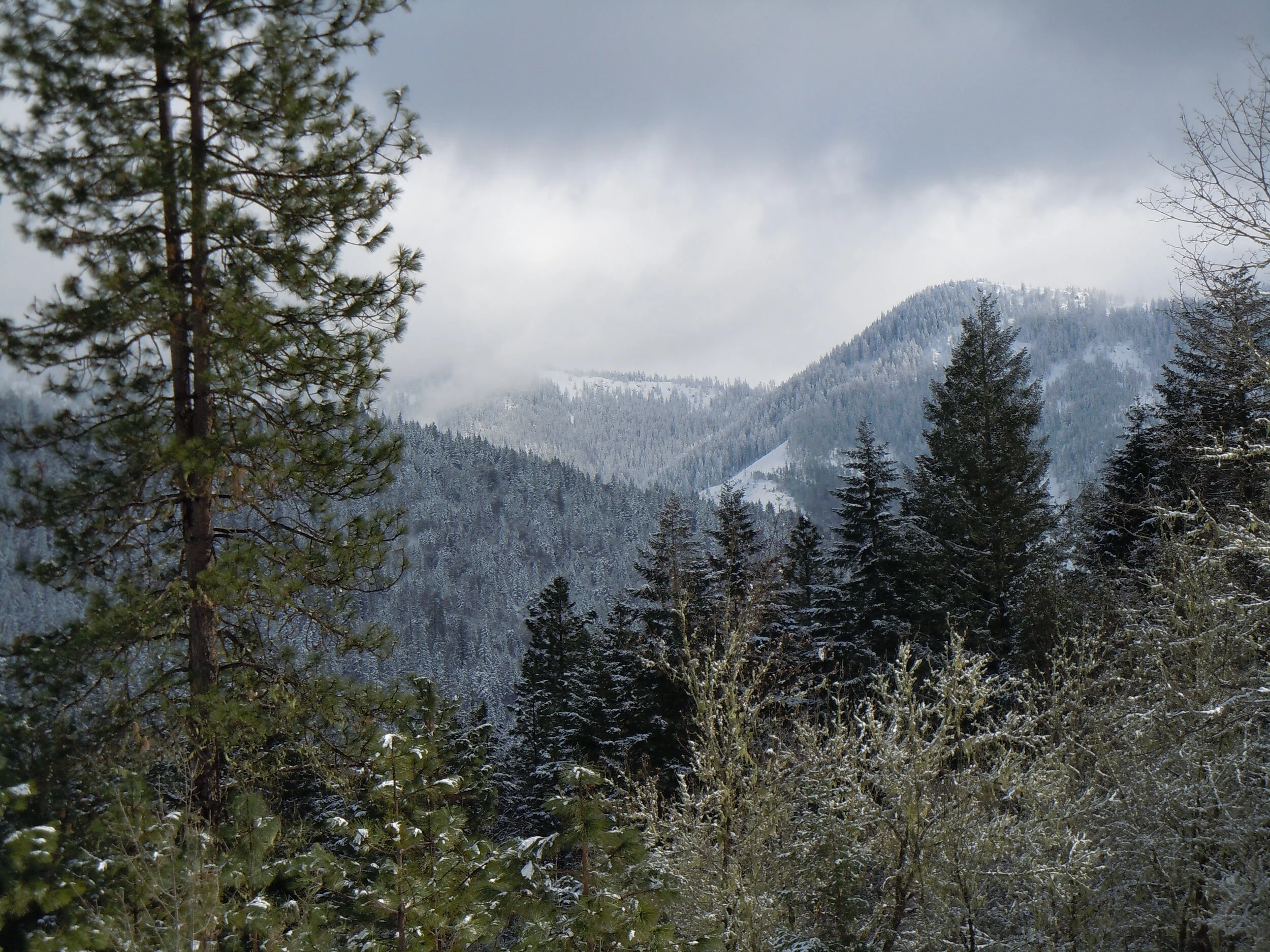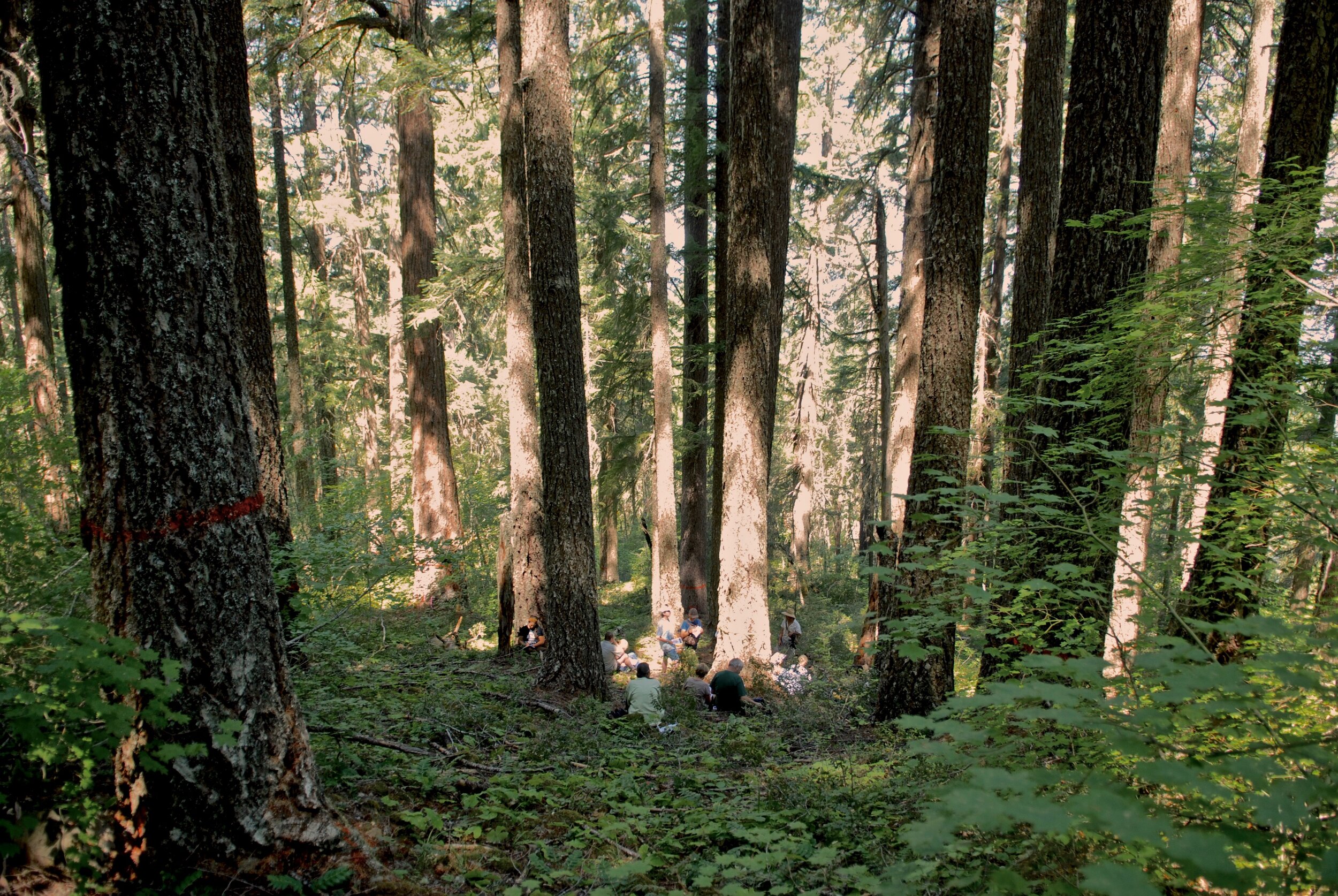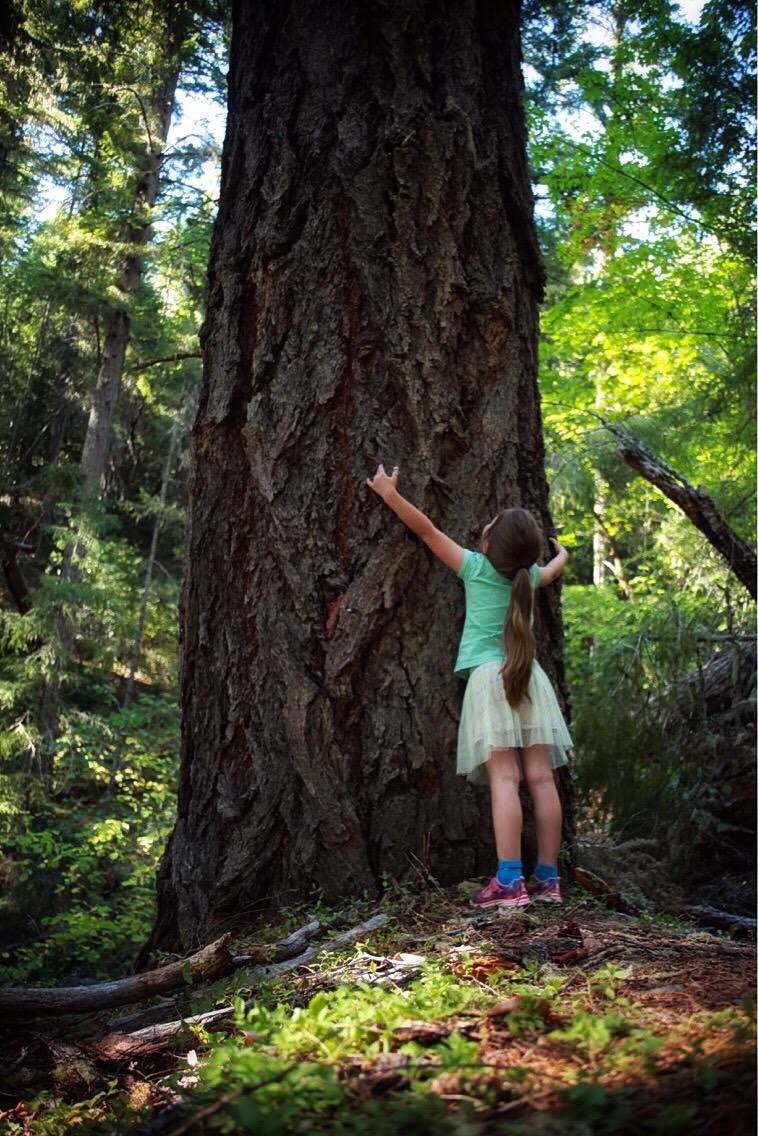Deer Creek Association’s mission is to promote and protect environments and species that sustain the web of life and human communities.
Community engagement in an old growth timber sale unit that has been saved from 4 BLM timber sales over the past 25 years. Under the Bureau of Land Management’s 2016 Resource Management Plan, this unit is designated within the Harvest Land Base land use allocation, leaving it particularly vulnerable to being included in future commercial timber sales. Ancient, fire resilient ecosystems such as this continue to be targeted for destructive and outdated logging practices that undermine the countless values these public lands provide. Photo by Stephen Kirkland
Since 1981, a relatively small, but mighty, group of dedicated volunteers are successfully changing the course of public lands projects in southwestern Oregon, preventing the conversion of thousands of acres of precious natural ecosystems into degraded tree plantations.
The Deer Creek watershed in Selma, Oregon, is home to a rural community in a unique and biodiverse area that has been heavily impacted by forest management practices. Despite these impacts, this resilient landscape continues to provide a stronghold for threatened species and a crucial connectivity corridor between the Siskiyou Mountains and Kalmiopsis Wilderness.
We work to protect the last remaining ancient ecosystems and implement sustainable relationships on the recovering areas. We advocate for an innovative solution to current crises such as species extinction, climate change, and protecting homes and communities from fire. By inviting people into the natural world and facilitating connection to complex, interdependent processes and relationships, we heal historical and cultural wounds and inspire hope in, and manifestation of, a new vision for the future.
Our Values
Life
Clean water
Clean air
Clean earth
Wildlife
Wildlands
Watersheds
Diversity
Symbiosis
Complexity
Connectivity
Natural processes
Interconnectedness
Ancient ecosystems
Sustainable relationships
Respectful Communication
Community health, safety, and stability
Responsibility to protect life and future generations
We strive to amplify voices of human and natural communities that become collateral damage in profit-driven economic systems.
In a rally organized by conservation organizations across southwestern Oregon, over a hundred gathered at the Bureau of Land Management Grants Pass office in 2017 to oppose the Pickett Hog Timber Auction, the first decision under the controversial Pickett West project. Almost all of Pickett West was saved due to widespread public opposition and citizen science.
We represent rural Americans on the frontlines of planetary crises.
Ground truthing 2017 Pickett West logging units in the Deer Creek watershed. Deer Creek Association and Northwest Ecosystem Survey Team (NEST) pictured standing with a beautiful old growth tree. Photo: KS Wild
What We do
DCA works to protect the last remaining islands of ancient ecosystems for their irreplaceable values and services, while supporting an innovative way to carefully extract resources, including timber, from previously logged lands without disrupting natural processes vital for their recovery. By creating mutually beneficial relationships between resource extraction jobs and our thriving non-extractive, amenity-based economy, we strive to build bridges in a historically divided community.
In 2005, DCA partnered with the Bureau of Land Management (BLM) to implement the Natural Selection Alternative (NSA), the first community alternative in the Medford District to successfully complete the National Environmental Policy Act (NEPA) process and be awarded a section of land in BLM’s decision as the best alternative. The Natural Selection Alternative not only offers an ecologically friendly way to provide products and sustainable jobs from public lands, it also provides one of the most effective and least costly fire safety plans. Part of our work involves sponsoring tours of a 240-acre demonstration site where natural-selection-based practices have been implemented on private land for 60+ years. We continue to support the vision for a pilot project of the NSA on public lands in the Deer Creek watershed to demonstrate how this innovative solution can be sustainably implemented in any watershed.
Decades of sacrifice and effective grassroots community organizing have helped to keep natural ecosystems in the Deer Creek watershed and beyond from being irreversibly converted into degraded tree plantations, giving us hope for the future.
DCA members have invested countless hours learning and educating about how ordinary citizens can participate in, and protect themselves from the harmful impacts of, public lands projects through the NEPA process. The extensive and innovative NEPA documents produced by DCA’s self-taught volunteers have been instrumental in protecting some of the last remaining ancient ecosystems on our public lands.
As a nonpolitical organization, DCA has earned support from, and forged positive relationships across, a broad range of political views, ages, and walks of life. In engaging the public and agency staff, we emphasize the importance of respectful communication and train volunteers in ways to find common ground in relationships with others.
Intergenerational Ecosystem Protection
Just as our old-growth trees hold incredible wisdom and pass this knowledge on to the young saplings, we are honored to have the invaluable wisdom of our ‘deer’ elders to mentor the next generation of ecosystem protectors.
DCA is in an exciting and critical time of transition where we are laying the foundation for a new era of leadership and expansion. We are deeply grateful for the support of our community and dedicated volunteers over the decades, whose profound care and devotion to protecting the earth and our community from harm has led to inspiring stories of success and empowerment in the face of a disempowering system.
Over the decades, we have watched the system adapt and evolve to our care and persistence, becoming ever-more sophisticated and Orwellian in perpetuating this failing system. It is vital for us to also continue adapting and evolving in order to preserve decades of protection work and continue working towards implementing a new paradigm of sustainability and environmental justice for our children and future generations to come.
Over the years, it has become increasingly difficult and burdensome for our leaders doing the heavy lifting and higher-level technical work to keep up with the onslaught of threats on purely volunteered time and a minimal budget. While raising funds has never been one of our top priorities, it is becoming increasingly clear that we need to be able to invest in more supplies and resources, as well as having the ability to support the professional level work that is required to be successful in accomplishing this challenging, yet vital, ecosystem protection work.
One of our primary goals in the coming years is to work towards building our organizational capacity to more effectively carry out our mission to promote and protect environments and species that sustain the web of life and human communities.
We are ever grateful for the crucial support of the Burning Foundation in 2023, which provided a tremendous help in continuing this important protection work and laying a solid foundation for growth in the future. The technical equipment provided by the Four Way Foundation in 2019 has also been invaluable to our work over the years.
To all our ‘deer’ supporters, we appreciate you beyond measure.
“Now when you cut a forest, an ancient forest in particular, you are not just removing a lot of big trees and a few birds fluttering around in the canopy. You are drastically imperiling a vast array of species within a few square miles of you. The number of these species may go to tens of thousands. Many of them are still unknown to science, and science has not yet discovered the key role undoubtedly played in the maintenance of that ecosystem, as in the case of fungi, microorganisms, and many of the insects. ”











